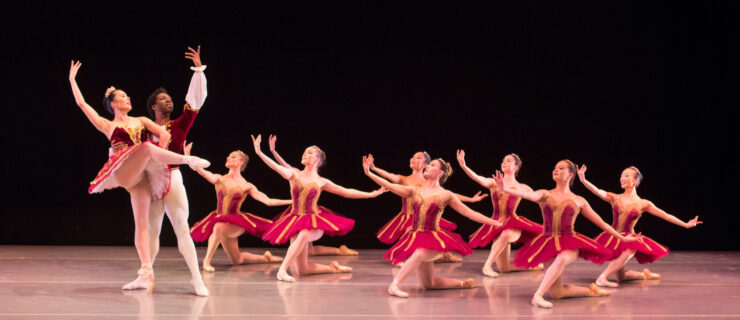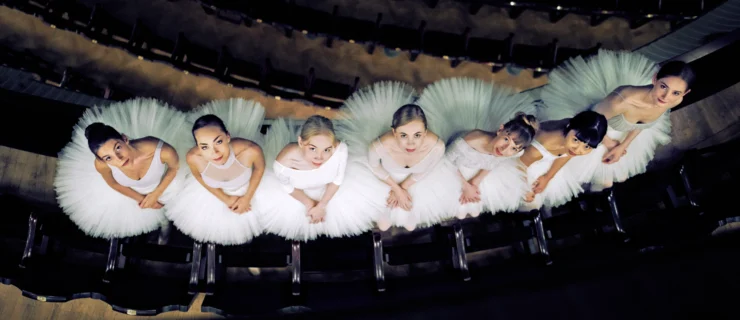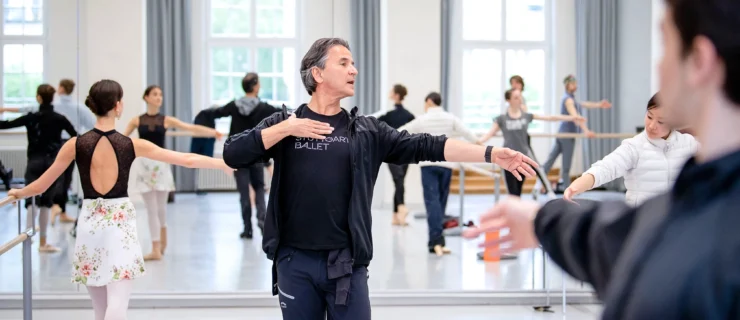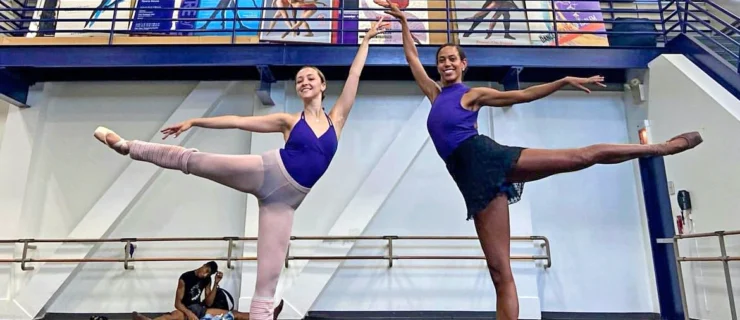The Style Debate
Choosing the right preprofessional program means thinking about the dancer you want to be. Stephanie Chrosniak, a member of New York City Ballet’s corps, trained at Central Pennsylvania Youth Ballet for 12 years. During her early years at the school, she focused on founder Marcia Dale Weary’s hybrid of the Vaganova syllabus and American ideas. Then when her technical base was solid, she sampled different styles of ballet from guest teachers. Meanwhile, Caroline Bird, who studied in her teen years at the Kirov Academy of Ballet of Washington, DC, focused solely on traditional Vaganova technique. She now dances with the Staatsballett Berlin. Both women easily secured jobs with internationally renowned companies.
So which path is correct? Should you study only one technique, or expose yourself to a variety of styles? A dancer who studies a single approach, like Balanchine technique, will have a strong grounding in it and might fit more easily in a company with that style. On the other hand, a dancer who learns several techniques could gravitate to a company with a more diverse repertoire without facing a steep learning curve.
Are there benefits beyond the job hunt to studying one technique—or several? Does focusing on one technique give a dancer an edge in terms of technical strength? What about learning new choreography? Does versatility mean a greater facility with new movement? Do you sacrifice clarity and expressiveness when you have too many styles to choose among? The answers can shape your training, and ultimately your career.
Fundamentals versus Range
Bird feels being able to focus on a single style made her stronger. “Having the opportunity to completely immerse myself in one technique was best for my mind and body because I didn’t waste muscle and mental energy getting confused about the proper way to attack a step,” she says.
Some teachers feel that learning different techniques can make it difficult for students who need a foundation before they can truly develop. “I don’t believe in ‘style’ when training young dancers,” says Martin Fredmann, the Kirov Academy’s deputy artistic director. “Sound technique is the only basis. ‘Style’ comes with being an advanced student and learning a choreographer’s choreography. Having a mix of different teachers, each teaching a so-called different ‘style,’ undermines the essential basis of ballet that must be understood in its most elemental form. And what is ‘style’ but a certain choreographer’s idea?”
Yet many dancers thrive in a varied approach. “I would definitely say that training with different styles can help you gain success as a dancer,” Chrosniak says. Parrish Maynard, who teaches at the San Francisco Ballet School (where teachers are given latitude to teach their own styles with a core Vaganova curriculum), believes that studying only one approach undermines a dancer’s education. “We get students from all over the world,” says Maynard. “They come stuck in one way and we have to spend so much time getting them to understand how to shape their bodies differently. I tell them styles are like jackets. You put them on and take them off.”
The Adaptability Debate
How does each type of training prepare a dancer for picking up choreography? Alan Hineline, resident choreographer of CPYB, feels no training, however varied, can fully prepare a dancer to go into a company and dance the variety of styles that even one repertory program might call for, like Balanchine, Taylor and Tharp. “The importance of the preparation is in being emotionally open to new styles so that you can easily adapt,” he says. Company schools tend to train dancers with the company’s repertoire in mind. According to Maynard, “SFB artistic director Helgi Tomasson wants students going into the company looking very classically oriented but with a contemporary edge.” Repertoire classes taught at the school include excerpts from ballets by choreographers like Balanchine, but also William Forsythe and Jirí Kylián.
A company that frequently performs one choreographer’s work—like Miami City Ballet, which has long given Balanchine a special place in their repertoire—might train dancers to that aesthetic. Edward Villella, the company’s artistic director and faculty chair of the Miami City Ballet School, developed his
curriculum based on his experiences as a Balanchine dancer at New York City Ballet, and his work with legendary School of American Ballet teacher Stanley Williams. “What Balanchine had was a 19th-century approach and then he invented on that and made his own manner and style,” says Villella. “I continue that investigation—the rhythms and the syncopations. It is an amalgamation that I received from brilliant people.”
For Villella, Balanchine technique provides a foundation for both classic and contemporary work. “We all come from the 19th-century technique,” says Villella. “Balanchine was a genius after Petipa who made his own approach to prepare you for the classic works. Once you dance Balanchine, it’s much easier to go back to the 19th century. What’s really difficult is when you only have the 19th century and you try to achieve Balanchine.”
Jeopardizing Purity?
Facility with new choreography aside, does a pure classical style suffer from being diluted with too many teachers? Maynard thinks not. “Nobody dances just one way anymore,” he says. “I was recently working with The Royal Ballet School, setting a piece that I’d choreographed for SFB. The first thing the school director said to me was, ‘They have to look more American. They look too British.’ The Royal Ballet said that to me!”
And which strategy helps the most in getting a job? “Of course there is no disadvantage for a dancer knowing different techniques in finding work, and it may be an advantage in some cases,” says the Kirov Academy’s Fredmann. “But in the long run, it’s the traditionally trained dancer who is the most durable, adaptable and least accident-prone.”
But like tends to draw like. Bird sought out a company that focused on the classical full-lengths. “Being surrounded by teachers who had thrived in and around the European dance world put European companies on a pedestal for me,” she says.
Maynard believes that ballet isn’t immune to change, and that extends to training. “Most directors these days say that dancers have to be more well-rounded as artists,” he explains. “Dance has evolved. Teachers and students need to evolve with it.” SFB takes most of its dancers from its school, but the school has placed dancers in many other companies, like American Ballet Theatre, Pacific Northwest Ballet, Oregon Ballet Theatre and the National Ballet of Canada. Currently there are more than 65 graduates of CPYB dancing professionally in national and international companies. Kirov Academy alumni dance in many companies, too; nearly half of the dancers in Miami City Ballet attended its school.
In the end, the type of technique you choose to study can help determine which type of company you end up dancing in—one that heavily favors the classics or a particular choreographer versus one with a more versatile repertoire. It’s up to the student to choose the path that best suits her.
Joseph Carman, author of Round About The Ballet, is a frequent contributor to Pointe.





